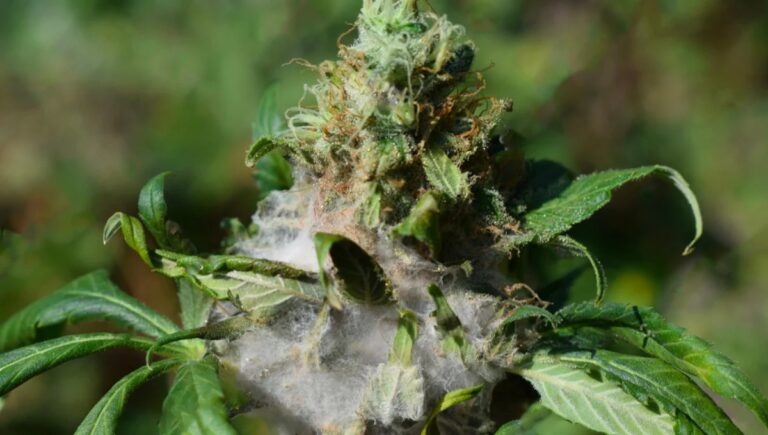What Does Moldy Weed Look Like?
Introduction
Moldy weed is a common concern for cannabis users and growers alike. Understanding how to identify moldy cannabis is crucial for ensuring safety and maintaining the quality of the product. Mold can not only affect the appearance and smell of weed but can also pose serious health risks if consumed. This article will provide an in-depth look at what moldy weed looks like, how to identify it, the types of mold that can affect cannabis, and the potential health implications of consuming moldy weed. Additionally, we will include a FAQ section and a summary table of key information.
Understanding Mold and Its Growth
What is Mold?
Mold is a type of fungus that grows in multicellular structures called hyphae. It reproduces through spores, which can travel through the air and settle on surfaces, including cannabis plants. Mold thrives in environments with high humidity, poor ventilation, and insufficient light.
Conditions Favoring Mold Growth
Several factors can contribute to the growth of mold on cannabis:
- High Humidity: Mold prefers environments with humidity levels above 60%.
- Poor Air Circulation: Stagnant air can create pockets of moisture, promoting mold growth.
- Inadequate Storage: Improperly stored cannabis, especially in airtight containers without desiccants, can trap moisture and lead to mold.
- Overwatering: Excess moisture in the soil can contribute to mold growth, particularly root rot.
Common Types of Mold Found on Cannabis
- Botrytis cinerea (Bud Rot): This mold appears as a grayish or brownish fuzz and typically attacks the inside of dense buds. It thrives in high humidity and can quickly spread if not addressed.
- Powdery Mildew: This mold appears as white, powdery spots on the surface of leaves and buds. It can spread rapidly in conditions of high humidity and poor air circulation.
- Aspergillus: This mold can appear as greenish or black spots and can produce harmful mycotoxins. It is particularly dangerous for individuals with compromised immune systems.
- Penicillium: This mold can appear as blue or green spots and is often found in environments with high moisture levels.
Identifying Moldy Weed
Visual Indicators of Moldy Weed
Identifying moldy weed can be challenging, especially for inexperienced users. Here are some key visual indicators to look for:
- Color Changes: Moldy weed may exhibit discoloration, such as brown, gray, or black spots. Healthy cannabis should have vibrant green hues.
- Fuzzy Appearance: Mold often presents as fuzzy patches or spots on the surface of the buds. This can resemble cobwebs or a powdery coating.
- Slimy Texture: Moldy buds may feel slimy or damp to the touch, indicating excess moisture and mold growth.
- White Powdery Substance: A white powdery coating can indicate powdery mildew. This type of mold can be mistaken for trichomes, which are the small, sticky glands that produce cannabinoids.
Smell Test
In addition to visual indicators, the smell of cannabis can provide clues about mold presence. Moldy weed often emits a musty, damp odor reminiscent of a wet basement or decaying organic matter. If the smell is off or distinctly different from the usual aroma of fresh cannabis, it may indicate mold contamination.
Mold vs. Trichomes
Distinguishing between mold and trichomes is crucial for identifying moldy weed. Trichomes are small, hair-like structures that appear as shiny, sticky crystals on healthy cannabis. They are essential for producing cannabinoids and terpenes. In contrast, mold appears fuzzy and lacks the shiny, crystalline appearance of trichomes.
| Feature | Mold | Trichomes |
|---|---|---|
| Appearance | Fuzzy, powdery, or slimy | Shiny, sticky, crystalline |
| Color | White, gray, brown, black | Clear, milky, or amber |
| Odor | Musty, damp | Pleasant, aromatic |
| Location | Surface of buds and leaves | All over the plant |
Health Risks of Consuming Moldy Weed
Consuming moldy weed can pose significant health risks, particularly for individuals with compromised immune systems or respiratory conditions. Here are some potential health implications:
- Respiratory Issues: Inhaling mold spores can irritate the respiratory system, leading to symptoms such as coughing, wheezing, and shortness of breath.
- Allergic Reactions: Mold exposure can trigger allergic reactions in sensitive individuals, resulting in symptoms like sneezing, runny nose, and skin rashes.
- Infections: Certain molds, such as Aspergillus, can cause serious lung infections, particularly in immunocompromised individuals.
- Decreased Potency: Mold can degrade the cannabinoids and terpenes in cannabis, leading to a loss of potency and flavor.
How to Prevent Mold Growth on Cannabis
Preventing mold growth on cannabis is essential for maintaining quality and safety. Here are some effective strategies:
- Control Humidity: Keep humidity levels between 40-50% during the drying and curing process. Use dehumidifiers if necessary.
- Ensure Proper Air Circulation: Use fans to promote airflow around your plants and during the drying process.
- Store Properly: Store cannabis in airtight containers with desiccant packs to control moisture levels.
- Inspect Regularly: Regularly check your cannabis for signs of mold or discoloration, especially if it has been stored for an extended period.
- Avoid Overwatering: Ensure proper drainage in your growing medium and avoid excessive watering to prevent moisture buildup.
FAQ Section
Q: What does moldy weed look like?
A: Moldy weed may appear fuzzy, powdery, or slimy, with discoloration such as brown, gray, or black spots. It often emits a musty odor.
Q: How can I tell if my weed is moldy?
A: Look for visual indicators such as fuzziness, discoloration, and a slimy texture. Additionally, perform a smell test for musty odors.
Q: Is it safe to smoke moldy weed?
A: No, smoking moldy weed can pose serious health risks, including respiratory issues and allergic reactions. It is best to discard moldy cannabis.
Q: What types of mold commonly affect cannabis?
A: Common types of mold include Botrytis cinerea (bud rot), powdery mildew, Aspergillus, and Penicillium.
Q: How can I prevent mold on my cannabis?
A: Control humidity, ensure proper air circulation, store cannabis in airtight containers with desiccants, and regularly inspect for mold.
Q: Can I remove mold from weed and still smoke it?
A: It is not advisable to attempt to remove mold from weed, as mold spores can remain even after visible mold is removed. Discard any moldy cannabis.
Q: What should I do if I find moldy weed?
A: Discard the moldy weed immediately to avoid health risks. If purchased from a dispensary, consider returning it for a refund or replacement.
Conclusion
Identifying moldy weed is crucial for ensuring safety and maintaining the quality of cannabis products. Understanding what moldy weed looks like, how to differentiate it from trichomes, and recognizing the potential health risks associated with mold can help users make informed decisions. By following preventive measures, cannabis growers and users can minimize the risk of mold contamination and enjoy a safe and high-quality experience.For more information on mold and its effects on cannabis, you can refer to the Wikipedia page on Cannabis.
| Indicator | Description |
|---|---|
| Appearance | Fuzzy, powdery, or slimy texture; discoloration (brown, gray, black) |
| Odor | Musty, damp smell; different from fresh cannabis aroma |
| Common Types of Mold | Botrytis cinerea (bud rot), powdery mildew, Aspergillus, Penicillium |
| Health Risks | Respiratory issues, allergic reactions, infections, decreased potency |
| Prevention Strategies | Control humidity, ensure air circulation, store properly, inspect regularly |
By staying informed about the appearance and risks of moldy weed, cannabis users can protect their health and enhance their overall experience.



